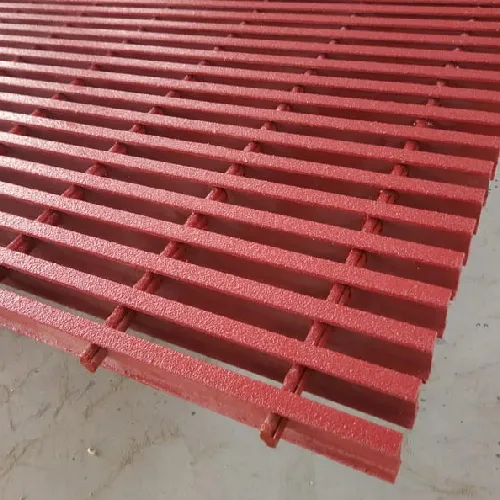loading...
- No. 9, Xingyuan South Street, Dongwaihuan Road, Zaoqiang County, Hengshui, Hebei, China
- admin@zjcomposites.com
- +86 15097380338
- Welcome to visit our website!
Specification for GRP Grating Material and Performance Criteria
Understanding GRP Grating Specification
GRP (Glass Reinforced Plastic) grating has become a popular choice across various industries due to its durability, corrosion resistance, and lightweight properties. This composite material is composed of fiberglass and resin, offering a unique blend of strength and versatility. When considering GRP grating for industrial applications, it is essential to understand its specifications to make informed decisions.
Material Composition
The specification of GRP grating primarily revolves around its material composition. Typically, GRP grating combines fiberglass strands with a thermosetting resin. The type of resin used can affect the grating's chemical resistance, fire rating, and temperature tolerance. Common resin types include polyester, vinyl ester, and epoxy. Each type offers different benefits, with epoxy providing superior chemical resistance, while vinyl ester offers excellent durability against harsh environmental conditions.
Load-Bearing Capacity
Another critical aspect of GRP grating specifications is its load-bearing capacity. GRP gratings are designed to support varying loads, making them suitable for various applications, from pedestrian walkways to heavy machinery platforms. Load capacity is typically expressed in terms of a uniformly distributed load (UDL) and a concentrated load (CL). It is important to refer to the manufacturer's load tables when selecting the appropriate grating thickness and type, as this ensures safety and performance standards are met.
Slip Resistance and Safety
grp grating specification

Safety is paramount in many operational environments, and GRP grating specifications often include slip resistance ratings. The surface of the grating can be modified to enhance traction, which is crucial in wet or oily conditions. Various safety standards and tests, such as the ANSI B101.1 test method, can be employed to evaluate slip resistance, ensuring compliance with local regulations and enhancing workplace safety.
Customization and Fabrication
GRP grating can be customized to meet specific project requirements. Manufacturers often provide options regarding dimensions, colors, and surface textures. Custom fabrication allows for unique configurations, such as cutouts for pipes or fittings, ensuring a perfect fit in diverse settings. Understanding the manufacturing lead times for customized GRP grating is also essential for effective project planning.
Environmental Benefits
Lastly, GRP grating specifications often highlight environmental benefits. The materials used in GRP production can be selected for reduced ecological impact, with options for recycled resins. Furthermore, GRP’s longevity and resistance to corrosion minimize the need for frequent replacements, ultimately leading to lower lifetime costs and reduced waste.
In conclusion, understanding GRP grating specifications is vital for selecting the appropriate product for your specific needs. By considering factors such as material composition, load-bearing capacities, slip resistance, customization options, and environmental benefits, you can ensure that the GRP grating meets all safety and performance standards necessary for your application. The right choice can significantly enhance operational efficiency while promoting safety and sustainability in the workplace.
-
Premium FRP Handrail for All ApplicationsNewsAug.29,2025
-
Low Maintenance FRP Mini Mesh Grating ProductsNewsAug.29,2025
-
Innovative FRP Square Tubes for Modern Industrial SolutionsNewsAug.29,2025
-
FRP Water Storage Tanks Wholesale Solutions for Bulk BuyersNewsAug.29,2025
-
FRP Molded Grating Solutions for Diverse Industrial ApplicationsNewsAug.29,2025
-
Construction Advancements Through FRP Pultruded ProfilesNewsAug.29,2025
-
Why Choose FRP Railings, Guardrails, and Handrail Systems?NewsAug.29,2025
